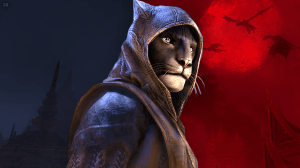Sometimes, I pull completely random comics out of a longbox while looking for something else.
Videos by ComicBook.com
Dig deep enough, and you will find the most random comics in the middle of the well-organized parts. Often, these are comics I forgot I had.
In that vein, today I bring you a recent discovery: “G.I. Joe: Scarlett: Declassified.” (Devil’s Due, 2006)

I come not to bury this book, but I do have some lessons to learn for creators who are still learning their craft.
First, the more colons your title has, the cooler it will sound. They managed to throw two of them in this title, alongside the two periods in “G.I.” That’s ultimate typographic coolness.
Second, the book is a flashback within a flashback, and I’m not even sure that makes sense. Michael O’Sullivan’s script starts with Scarlett looking at the reader and saying, “You sure you want to hear all of this?”
The cover tells us it’s a 48 page special, so I’m guessing we’re going to hear it all now, whether we like it or not. By the way, the book ends with two pages where we see that Scarlett was asking Snake Eyes that question.
These three pages are completely unnecessary and only complicate the story with an extra framing sequence. The cover should say this book has “45 Fabulous Pages”, not 48.
Here’s where it gets even funnier, though. This book came out in 2006, so perhaps this wasn’t as big a cliche as it is today, but:
We flash back to Scarlett being held prisoner. Two guards watch over her. Her hands are tied behind her back. She fights her way out, gets back to throw herself into a much bigger battle, and just as Destro emerges from the smoke and rushes at her with two guns pointed forward, the caption box telling us her thoughts reads:
“I guess I should really start at the beginning.”
That worked for the first “Deadpool” movie, because it was making light of the cliche. I think we’ve all suffered enough from this in media res stuff where the movie or comic starts at the end and flashes back to “how we got here.” But this one was so obvious with it that it made me laugh.
The rest of the book tells you the story of how Scarlett grew up in a family of fighters, whose father taught them to be self-sufficient and tough. She competed, she graduated law school, she wanted more structure so she enlisted, and then she had a major case go bad. But she learned her lessons, got drafted by GI Joe, and that’s that.
There’s so much stuff in this one issue that it could have been a six issue series. It finishes up in 45 pages because everything is told to you. Even when the caption boxes are explaining what the panels are showing, it’s still a lot of telling. It’s not dramatic, it’s very passive for the reader.

There’s an “action” sequence here and there, but most of the book is pages packed full of caption boxes with Scarlett explaining her life to you — or, more specifically and two “Inception”-like levels higher — to Snake Eyes.
Wait — that’s it! The whole reason for those three wasted pages bookending the entire book is to explain why it is that Scarlett is telling you her life story. So it’s all tell and no show with a framing device to justify it.
The Punisher didn’t need a bookend to justify his existence. He just had a journal. Scarlett should take up writing — she IS an ex-lawyer, after all — and save us all three pages next time.
Structural issues aside, what really sells this book is that Phil Noto drew it. That’s what jumped out at me from the longbox. This had to be one of his earliest interior jobs. At this point, I knew Noto from his covers on “Birds of Prey,” which were both well drawn and excellently designed. Those were some very pretty covers.

This book is about what you’d expect from Noto at this stage in his career. It’s definitely his style, but it’s still a little stiff and rough. There are excellent moments and strong storytelling choices throughout. He’s obviously influenced by film, including a lot of widescreen panels. His compositions and storytelling are his strengths.
But the art, itself, is a little inconsistent still. Backgrounds are particularly sparse, at times. The characters are mostly standing upright and looking directly at the reader. He varies things better in the action scenes, where it becomes particularly effective just from being a break from the norm.
Noto is also coloring himself in this book. He’s playing with some Photoshop filters (hello, blur tool), but it’s mostly restrained cell shading style that is an integral part of his style.
In the end, this is a good book to have for a Noto completist. It’s not a great comic book. I suppose if you’re a G.I. Joe completist, you’d definitely want it, particularly if you want to read one possible “origin story” for Scarlett. From a 2020 perspective, though, it’s early work from all the creators and they’d probably agree that they’ve come a long way since then.








